Search
forResearch: Recent
30 / 1000+ results
research Herbal Shampoos: Nature's Solution for Healthy Hair
Herbal shampoos are a safe, eco-friendly option that promote healthy hair.

research Herbal Shampoos: Nature's Solution for Healthy Hair
Herbal shampoos are a safe, eco-friendly choice for healthy hair.

research Role of Botanicals in Alopecia Management: Mechanism of Ginger, Garlic, Clove, and Onion
Onion juice is most effective for hair regrowth, while garlic, ginger, and clove help with scalp health.

research Role of Botanicals in Alopecia Management: Mechanism of Ginger, Garlic, Clove, and Onion
Onion juice is most effective for hair regrowth, while garlic, ginger, and clove support scalp health.
research Precision therapeutics in non-scarring alopecia: a systemic genomic and pathway-based framework for targeted interventions
research Preparation and Evolution of Herbal Anti-Fungal Shampoo
research Preparation and Evolution of Herbal Anti-Fungal Shampoo
research Regenerative Therapy Strategies in the Treatment of Androgenetic Alopecia: A Review of Innovative Methods
Mesenchymal stem cells show promise for hair regrowth in androgenetic alopecia, but more research is needed.

research Bioengineered Exosomal Hair Growth Factors Complex in Upregulating HFDPCs, Downregulating IL-6, IL-1β in Hair Growth
The treatment effectively reduces hair loss and improves hair growth with minimal side effects.
research CHANGES IN THE STRUCTURAL ELEMENTS OF THE SEBACEOUS HAIR FOLLICLE IN THE DIFFERENTIAL DIAGNOSIS OF NON-SCAR ALOPECIA
research A REVIEW ON HIBISCUS ROSA-SINENSIS: PHYTOCHEMISTRY AND MEDICINAL USES
research A REVIEW ON HIBISCUS ROSA-SINENSIS: PHYTOCHEMISTRY AND MEDICINAL USES

research Fermented Yeast Complex Extract Promotes Hair Regrowth by Decreasing Oxidative Stress
Fermented Yeast Complex Extract helps regrow hair by reducing oxidative stress and inflammation.

research Study on the Mechanism That SNPs Related to Sex Hormone Metabolism Regulate the Imbalance of Sex Hormones and Lead to BPH in Rats
Combined finasteride and anastrozole therapy effectively treats BPH, influenced by hormone imbalances and genetics.
research Solubility Preformulation Screening of Minoxidil in Different Natural Oils Using Experimental and Computational Approaches
Minoxidil dissolves best in shea butter, stearic acid, and rosemary oil, which may improve hair growth treatments.
research Causal Effects of Glutamine and Lipid-Related Metabolites on Alopecia Areata: A Two-Sample Mendelian Randomization Study
Glutamine may protect against alopecia areata, while certain cholesterol and glucose levels may increase risk.

research Trident Thermal Conductivity Application Highlight: Thermal Conductivity Measurements of Hair and the Influence of Thermal Protectants
Thermal protectants help reduce hair damage from heat styling.

research Trident Thermal Conductivity Application Highlight: Thermal Conductivity Measurements of Hair and the Influence of Thermal Protectants
Thermal protectants help reduce hair damage from heat styling.

research A Nourishing Botanical Treatment For Stronger Roots, Fuller Lengths, And Long-Term Hair Restoration
SwaLife Hair Bloom Onion Oil strengthens and restores hair using onion extract and herbs.

research A Nourishing Botanical Treatment For Stronger Roots, Fuller Lengths, And Long-Term Hair Restoration
SwaLife Hair Bloom Onion Oil strengthens hair and promotes growth.

research Pathophysiology and Therapeutic Remodeling of Androgenetic Alopecia via Bio-Electric and Hydrodynamic Restoration
Male pattern baldness may be reversed by reducing scalp tension and improving blood flow.

research Pathophysiology and Therapeutic Remodeling of Androgenetic Alopecia via Bio-Electric and Hydrodynamic Restoration
Male pattern baldness may be treated by addressing blood flow and electrical issues in the scalp.

research Strengthening Roots, Reducing Hair Fall, And Reviving Scalp Health Through Botanical Innovation
SwaLife Onion Shampoo helps make hair stronger and healthier using onion and other natural ingredients.

research Strengthening Roots, Reducing Hair Fall, And Reviving Scalp Health Through Botanical Innovation
SwaLife Onion Shampoo helps make hair stronger and healthier using onion and other natural ingredients.
research Scalp Apocrine Glands: The Neglected Component of the Hair Follicle Complex
Scalp apocrine glands may help remove waste and balance electrolytes, but their role is not fully understood.
research Photobiomodulation Therapy and 5% Minoxidil in Female Pattern Hair Loss: A Case Series Focusing on Hair Growth Phases Over a Shorter Timeframe
This study investigated the effects of combining photobiomodulation therapy (PBMt) with 5% minoxidil (MIN) on female pattern hair loss (FPHL) over a 12.5-week period, involving 9 women aged 30 to 50 years. Participants applied MIN twice daily, and one side of their scalp received 25 sessions of red laser treatment, while the other side received sham irradiation. Results showed significant improvements in quality of life scores and hair density for both the MIN and PBMt + MIN groups. Notably, the PBMt + MIN group experienced a greater reduction in telogen-phase hairs, suggesting that PBMt may enhance MIN therapy for FPHL by reducing telogen-phase hair counts within a shorter treatment period.
research Drug–Drug Coamorphous System of Tadalafil and Finasteride for Enhanced Pharmaceutical Performance
Combining tadalafil and finasteride improves their solubility and effectiveness.

research GBP1 as a Machine Learning-Prioritized Biomarker and Therapeutic Target for Epstein-Barr Virus-Induced Clear Cell Renal Cell Carcinoma: Multi-Omics Causal Validation
GBP1 is a key target for treating Epstein-Barr virus-related kidney cancer, and finasteride may help.
research Drug–Drug Coamorphous System of Tadalafil and Finasteride for Enhanced Pharmaceutical Performance
A new combination of tadalafil and finasteride improves drug performance and stability.
Research: Highly Cited
30 / 1000+ results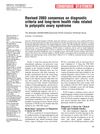
research Revised 2003 Consensus on Diagnostic Criteria and Long-Term Health Risks Related to Polycystic Ovary Syndrome
The 2003 consensus updated PCOS diagnosis criteria and highlighted increased risks of diabetes and heart disease for those affected.
research Derivation And Validation Of The Systemic Lupus International Collaborating Clinics Classification Criteria For Systemic Lupus Erythematosus
The new SLICC criteria for diagnosing lupus are more sensitive and accurate than the old criteria.
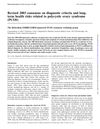
research Revised 2003 Consensus on Diagnostic Criteria and Long-Term Health Risks Related to Polycystic Ovary Syndrome (PCOS)
The 2003 consensus updated PCOS diagnosis criteria and linked PCOS to higher risks of diabetes and heart problems, recommending lifestyle changes to lower these risks.
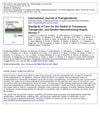
research Standards of Care for the Health of Transsexual, Transgender, and Gender-Nonconforming People, Version 7
The guidelines recommend informed consent for gender-affirming treatments and stress the importance of personalized, culturally sensitive care for transgender individuals.
research Organic Causes of Erectile Dysfunction in Men Under 40
Many men under 40 with erectile dysfunction have organic causes like vascular issues, medication side effects, or hormonal problems.
research Polycystic Ovary Syndrome: Clinical and Biochemical Features
PCOS is a common hormonal disorder causing irregular periods and increased hair growth, linked to insulin resistance and long-term health issues.
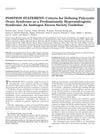
research Criteria for Defining Polycystic Ovary Syndrome as a Predominantly Hyperandrogenic Syndrome: An Androgen Excess Society Guideline
Polycystic Ovary Syndrome should be seen mainly as a condition of excess male hormones, with a focus on this in its definition.
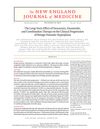
research The Long-Term Effect of Doxazosin, Finasteride, and Combination Therapy on the Clinical Progression of Benign Prostatic Hyperplasia
Combination therapy of doxazosin and finasteride safely and effectively reduces benign prostatic hyperplasia progression risk.
research Evidence-Based Medicine: A Movement in Crisis?
Evidence-based medicine needs improvement to better tailor treatments to individual patients.
research Stem Cells and Their Niches
Understanding stem cell interactions with their environments is key for advancing regenerative medicine.
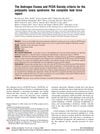
research The Androgen Excess and PCOS Society Criteria for the Polycystic Ovary Syndrome: The Complete Task Force Report
The report concludes that PCOS is mainly a condition of excess male hormones and its definition may change as new information is discovered.
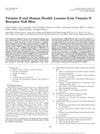
research Vitamin D and Human Health: Lessons from Vitamin D Receptor Null Mice
Mice without the vitamin D receptor have bone issues and other health problems, suggesting vitamin D is important for preventing various diseases in humans.
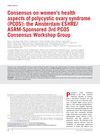
research Consensus on Women's Health Aspects of Polycystic Ovary Syndrome: The Amsterdam ESHRE/ASRM-Sponsored 3rd PCOS Consensus Workshop Group
Experts agree that PCOS affects women's health in complex ways, but more research is needed to understand and treat it effectively.
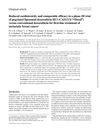
research Reduced Cardiotoxicity and Comparable Efficacy in a Phase III Trial of Pegylated Liposomal Doxorubicin HCl (CAELYX/Doxil) Versus Conventional Doxorubicin for First-Line Treatment of Metastatic Breast Cancer
Pegylated liposomal doxorubicin is as effective as conventional doxorubicin but causes fewer heart problems and side effects.
research Wound Healing: Cellular Mechanisms and Pathological Outcomes
Better understanding of wound healing is needed to develop effective treatments for chronic wounds.
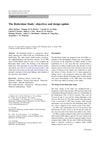
research The Rotterdam Study: Objectives And Design Update
The Rotterdam Study investigates diseases in older adults and has produced many research findings.

research The Human Keratins: Biology And Pathology
Keratins are crucial for cell stability, wound healing, and cancer diagnosis.
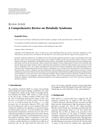
research A Comprehensive Review on Metabolic Syndrome
Managing metabolic syndrome needs both lifestyle changes and medical treatments.
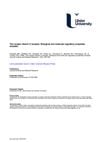
research The Nuclear Vitamin D Receptor: Biological and Molecular Regulatory Properties Revealed
The vitamin D receptor is crucial for bone health and affects various body systems, with mutations potentially leading to disease.
research Stem Cells in the Hair Follicle Bulge Contribute to Wound Repair but Not to Homeostasis of the Epidermis
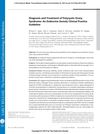
research Diagnosis and Treatment of Polycystic Ovary Syndrome: An Endocrine Society Clinical Practice Guideline
The guideline suggests using specific criteria to diagnose PCOS, recommends various treatments for its symptoms, and advises screening for related health issues.
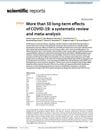
research More Than 50 Long-Term Effects of COVID-19: A Systematic Review and Meta-Analysis
COVID-19 leaves 80% of patients with long-term symptoms like fatigue and headaches.
research Distinct Fibroblast Lineages Determine Dermal Architecture in Skin Development and Repair
Two fibroblast types shape skin structure and repair differently.
research Gender Differences in the Regulation of Blood Pressure
Men generally have higher blood pressure than premenopausal women, but postmenopausal women's blood pressure can surpass men's, and hormone therapy doesn't significantly help.
research Coexistence of Quiescent and Active Adult Stem Cells in Mammals
Active and quiescent stem cells work together in mammals to maintain and repair tissues.
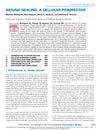
research Wound Healing: A Cellular Perspective
The document concludes that better targeted treatments are needed for wound healing, and single-cell technologies may improve cell-based therapies.
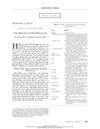
research The Biology of Hair Follicles
Hair follicle biology advancements may lead to better hair growth disorder treatments.
research The Side Effects of Platinum-Based Chemotherapy Drugs: A Review for Chemists
Platinum-based chemotherapy drugs can cause many severe side effects, often requiring dose reductions and additional medications to manage.

research MicroRNA Control of Signal Transduction
MicroRNAs are crucial in controlling cell signaling, affecting cancer and tissue regeneration.
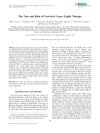
research The Nuts and Bolts of Low-Level Laser Therapy
Low-level Laser Therapy may help reduce inflammation, pain, and aid healing, but more research is needed to confirm its effectiveness and establish standard treatment guidelines.